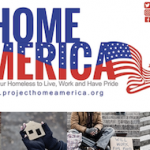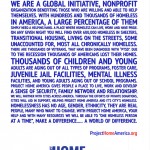Tents, bikes, luggage are piled up on the Plaza of the Flags as people sleep in their sleeping bags and tents early one morning at the Santa Ana Civic Center.
California is home to 31 percent of the nation’s homeless population, according to a recent report of the Department of Housing and Urban Development
Reflective of what Californians across the state have probably seen with their own eyes, this sorry fact was in part driven by a 14 percent increase in the homeless population in 2016-17, the largest increase of any state.
Troublingly, most of the 134,278 people who experienced homelessness in the Golden State in 2017 had no roof at all over their heads. According to HUD, more than 91,000 of the state’s homeless, more than two-thirds of the total, were unsheltered.
Of the three major city continuums of care in the nation in which 70 percent or more of the homeless were unsheltered, all of them were in California. This includes Los Angeles County, where 75 percent of the homeless are unsheltered, including 80 percent of unaccompanied homeless youth.
In New York State, which has the second-highest homeless population of 89,503 and experienced the second-largest increase in homelessness in 2016-17, just 5.1 percent of the homeless population is unsheltered.
With one of the largest economies in the world, one of the most extensive systems of taxation and redistribution and a state government which prides itself on being one of the most progressive in the nation, California’s vast homelessness problem, and its composition of it, is a scandal.
Significant work must be done not just by government, but by individuals and private organizations. Long-term, state and local government must do more to accommodate the construction of more housing, given the lag in housing construction for the past couple of decades.
This necessarily involves a concerted effort to make it easier to build by streamlining permit processes, revamping often antiquated zoning restrictions and preventing the abuse of laws like CEQA to hold up development.
There must also be more done to make it possible for a greater number of homeless people to access services and shelters. This too, will require a rejection of NIMBYism and understanding that the homeless problem isn’t one we can keep ignoring or passing on to other communities or higher authorities.







